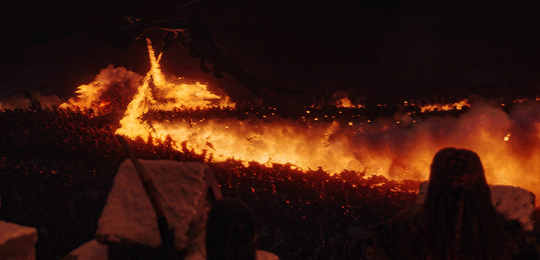Did Game of Thrones Season 8 Episode 3 Just Save The Movie Industry?
by John Doyle
The controversy about the visual quality of The Long Night, episode 3 of season 8 of Game of Thrones, may be the best argument for movie theaters we have. In a world where people are skipping movies in theaters to watch them stream, GOT 8.3 reminds us that film-making should not be compressed to the small screen ( or stream).
The 55 day night time shoot was planned to be a masterwork of battle film-making. Miguel Sapochnik and Fabian Wagner worked to create the most visually powerful images they could, shooting in DP created “natural light” with high quality cameras. Their ability to shoot is not in question and is evidenced in their previous work. The episode was shot with depth and subtly. Members of the cast who saw it screened in a theater through the episode was one of the best that the series had to offer, at least visually, and they were stunned to hear the backlash over muddy, too dark images.
As much as the outcry and retorts are interesting as a social conversation. The real issue is whether or not cinema art can adequately be crunched into a small screen (and even a 60 inch LED is a small screen compared to a theatrical screen) through a limited bandwidth digital pipe.
There are likely three reasons for the issues that so many viewers had in the episode
Compression, Streaming bandwidth, television calibration. Each of these highlights a contract from home viewing and cinema viewing.
Streaming promises a personal experience of a film with easy access.
The idea of streaming, the individual reception of film, without the loss of “airwave” transmission and the temporal limitations of TV schedules, opens the door for a broad intimate access to entertainment and visual art. That is admirable and has been heralded as a replacement for going to the theater. People go to the theater to see the “BIG” movies full of spectacle, on the “Big Screen.” That may be a short sighted reason to go compared to the issues that GOT 8.3 spotlights.
Sure there are limitations in the experience of a Movie in a theater. Movie theaters require audience to buy individual tickets, vie for a seat, tolerate the rest of the audience and travel to see the films.
But movie theaters have some benefits that are highlighted by the issues with image on GOT 8.3 First the theater is designed for film viewing. The lighting in the theater, the lack of outside lighting and the control of theater lighting, the scale of the screen and the projector, calibrated by experts to show the image as intended. The theater also does not need to compress the image. Either uncompressed video, or real film, rolling their a project will not have artifact and muddied images. The full depth of the image, seen through a lens give the full range of color and image intended by director and DP. finally, the bandwidth in a theater is parallel and independent. Each viewer eyes are not vying for signal from the screen, sure there can be struggles when the guy in front of you goes to get a soda or use the bathroom, but those distractions do not limit the actual transmission of image to eye, and brain.
Streaming, is wonderful and convenient and as tremendous a home TV technology has become, streaming is limited. The number of viewers chewing up bandwidth requires compression. The video already needs compression just to work within the bandwidth infrastructure of the national networks and home modems. The addition of television calibrated by untrained individuals on TVs that use automatic settings to alleviate customer expertise and needs for knowledge assures that the images created by the artist, the director and DP and color graders, are not output through devises set for those images.
The disappointment the audience felt about GOT 8.3 reminds us that a trip to the theater, into the hands of experts in translating the work of the cinema artists to the actual movie screen cannot be replaced by streaming at this point in time and likely because of the individual nature of home viewing ever.
GOT8.3 may have been disappointing as a narrative but its value to cinema makes those weaknesses pale by comparison, or at least get lost in the artifacts and muddy grays….

